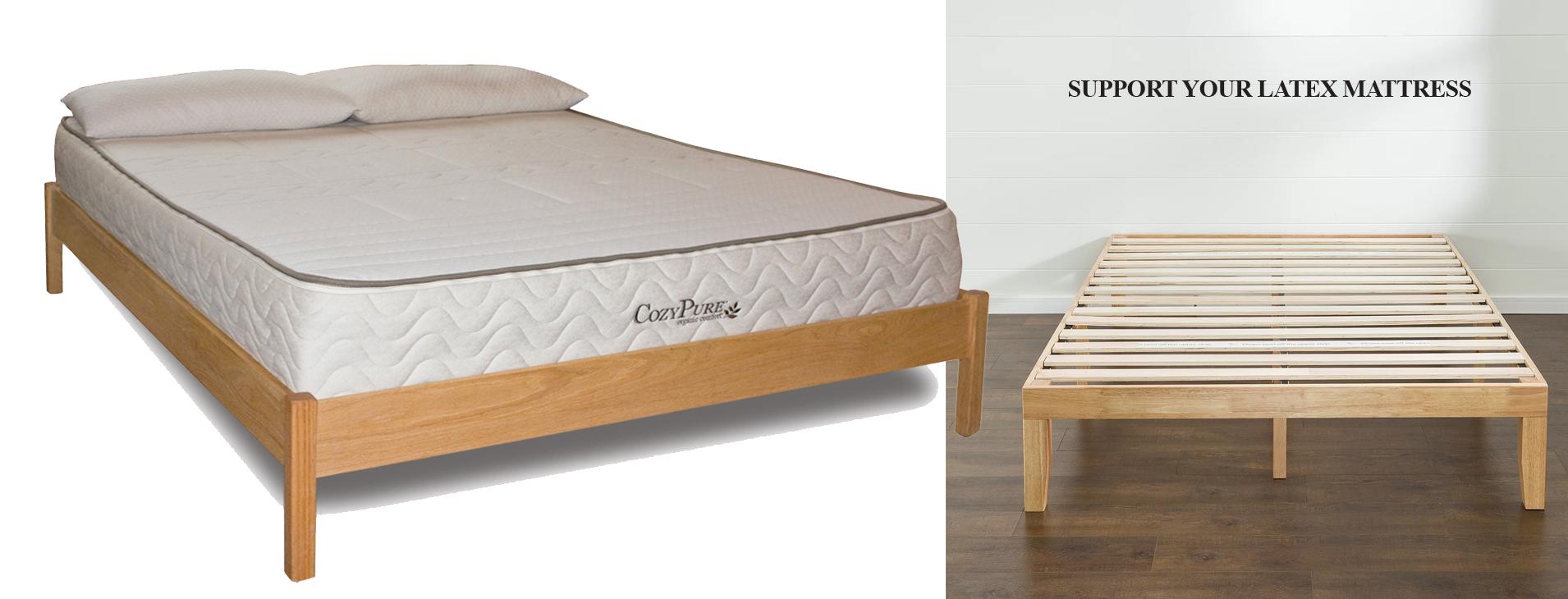When it comes to the pursuit of the perfect night’s sleep, the debate between latex and memory foam has become a focal point for many. Both materials promise restful slumber and support, yet they strike different chords in the symphony of comfort. Latex, often celebrated for its buoyancy and natural composition, contrasts sharply with memory foam’s enveloping embrace and contouring capabilities. As sleep technology evolves and consumer preferences shift, understanding the nuances between these two popular choices is vital for making informed decisions. In this exploration, we will delve into the unique characteristics of latex and memory foam, examining their respective support systems to determine which one may ultimately lead to a more rejuvenating sleep experience. Get ready to embark on a journey through the world of sleep materials, as we uncover the truth behind the support that rests beneath us each night.
Exploring the Unique Support Mechanisms of Latex and Memory Foam
When comparing support mechanisms, latex mattresses shine with their natural elasticity and resilience. This unique property allows them to instantly adapt to the sleeper’s body contours while maintaining a buoyant feel. The combination of these features ensures a balanced support system that keeps the spine aligned without excessive sinkage. Furthermore, naturally ventilated latex promotes airflow, reducing heat retention, which enhances overall comfort. Here are some key aspects of latex support:
- Responsive Adaptation: Quickly adjusts to body position changes.
- Durability: Maintains form and support over time, extending lifespan.
- Natural Materials: Often made from organic sources, appealing to eco-conscious consumers.
In contrast, memory foam boasts a unique support system characterized by its contouring capabilities. When weight is applied, memory foam compresses and envelopes the body, providing targeted pressure relief. This characteristic helps in alleviating discomfort for those with aches or chronic pain. However, the responsiveness can vary, commonly leading to a “stuck” sensation. Here’s a brief overview of memory foam’s support qualities:
- Pressure Relief: Ideal for those needing to reduce pressure points.
- Motion Isolation: Absorbs movement, beneficial for couples.
- Temperature Sensitivity: Can retain heat, affecting sleeping comfort.
| Feature | Latex | Memory Foam |
|---|---|---|
| Responsiveness | Highly Responsive | Moderately Responsive |
| Pressure Relief | Balanced Support | Excellent Pressure Relief |
| Durability | Long-lasting | Variable Lifespan |

Understanding Pressure Relief and Alignment: A Comparative Analysis
The journey to discover the ideal sleeping surface often revolves around two popular materials: latex and memory foam. Each offers distinct advantages when it comes to pressure relief and maintaining proper spinal alignment. Latex foam is known for its resilience, providing a buoyant feel that cradles the body while allowing for increased airflow. This helps in reducing heat retention, a common issue with other materials. On the other hand, memory foam adapts to the body’s contours, effectively distributing weight and minimizing pressure points, which can be particularly beneficial for side sleepers.
When comparing the two, a few key considerations stand out:
- Responsiveness: Latex foam showcases rapid responsiveness, allowing for easier movements during sleep, whereas memory foam can create a slight sinking sensation.
- Durability: Latex generally boasts a longer lifespan than traditional memory foam, maintaining its structural integrity and support over time.
- Motion Isolation: Memory foam excels in absorbing motion, which is advantageous for couples, while latex can transfer movement more readily.
| Feature | Latex Foam | Memory Foam |
|---|---|---|
| Pressure Relief | Good | Excellent |
| Spinal Alignment | Promotes | Promotes |
| Heat Retention | Low | High |
| Responds to Movement | Quickly | Slowly |

Durability and Longevity: Which Material Stands the Test of Time?
When evaluating materials for long-term use, one must consider how each type withstands daily wear and tear. Latex mattresses are often celebrated for their durability. Made from natural or synthetic rubber, they possess a resilience that allows them to retain their shape over extended periods. On average, a high-quality latex mattress can last between 8 to 12 years, which is significantly longer than many traditional materials. This extended lifespan is attributed to their ability to resist sagging and their overall robustness.
In contrast, memory foam offers great comfort but generally falls short in terms of longevity. While advanced formulations have improved their durability, most memory foam mattresses have a lifespan of approximately 6 to 8 years before noticeable wear occurs. They tend to absorb heat and can develop body impressions over time, reducing their overall support. However, the choice of memory foam density can impact durability, with higher-density options typically offering better longevity. Here’s a brief comparison of their characteristics:
| Material | Average Lifespan | Resistance to Sagging | Heat Retention |
|---|---|---|---|
| Latex | 8-12 years | High | Low |
| Memory Foam | 6-8 years | Moderate | High |

Choosing the Right Option for Your Sleep Style and Health Needs
When choosing between latex and memory foam, it’s essential to consider how each material aligns with your unique sleep style and health requirements. Latex mattresses are often favored for their natural resilience and breathability, making them an excellent choice for those who sleep hot or prefer a more responsive feel. They tend to provide a firmer yet cushiony surface, which can be particularly beneficial for stomach sleepers and individuals with back pain, as they help maintain proper spinal alignment. In contrast, memory foam mattresses excel at contouring to the body, providing targeted support and pressure relief, especially for side sleepers. This cradling effect can alleviate aches and pains, making it an appealing option for those recovering from injuries or struggling with joint discomfort.
To help you determine which material suits your sleep needs better, consider the following factors:
- Temperature Regulation: Latex naturally vents heat, while memory foam may retain warmth.
- Pressure Relief: Memory foam excels at relieving pressure points, making it ideal for heavier individuals.
- Durability: Latex generally offers a longer lifespan compared to memory foam.
- Allergies: Natural latex is hypoallergenic, making it suitable for allergy sufferers.
Additionally, when assessing these options, it’s worth comparing their performance metrics in a straightforward manner:
| Feature | Latex | Memory Foam |
|---|---|---|
| Supportiveness | Firm and responsive | Contouring and plush |
| Motion Isolation | Moderate | Excellent |
| Odor | Minimal | Strong initial off-gassing |
| Eco-Friendliness | Natural options available | Varied; some are not eco-friendly |
In Conclusion
In conclusion, the choice between latex and memory foam ultimately hinges on individual preferences and specific sleep needs. Latex mattresses provide a buoyant support that caters to those who enjoy a more responsive surface, while memory foam excels in contouring to the body, offering pressure relief that cradles the sleeper in comfort. As we’ve explored the unique characteristics of both materials, it’s evident that each has its own set of advantages.
Whether you lean towards the natural resilience of latex or the enveloping embrace of memory foam, what truly matters is finding a solution that enhances your sleep quality. Your mattress is more than just a place to rest—it’s an investment in your well-being. So, take the time to test and evaluate, and eventually, you’ll discover the perfect support that aligns with your body’s needs and your personal sleep style. After all, the best sleep experience is one that leaves you recharged and ready to embrace the day ahead.














Leave feedback about this